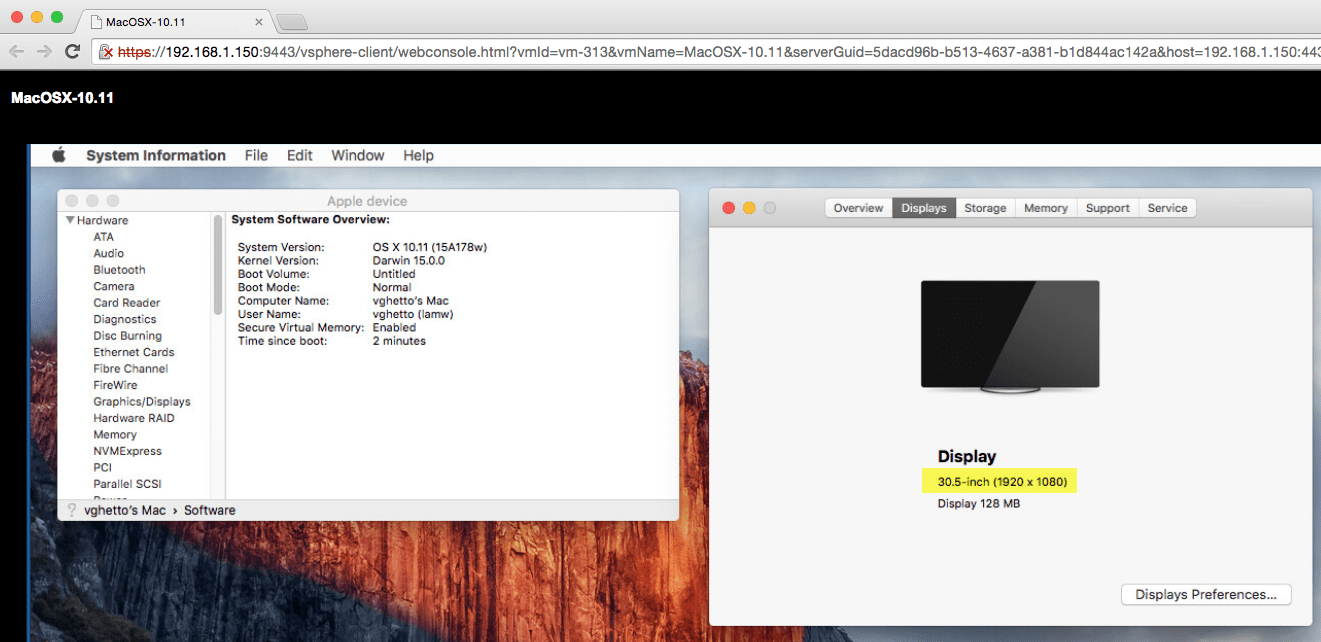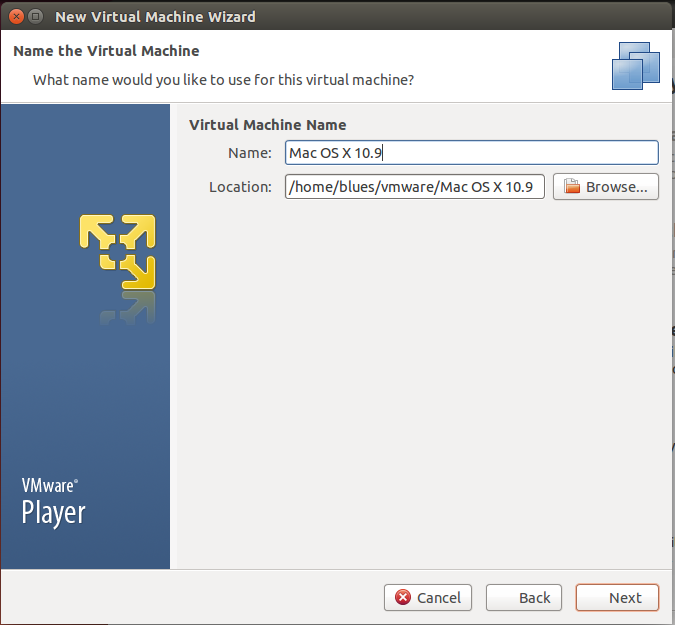Web site: www.opendarwin.org (not active)
Origin:USA
Category:Desktop
Desktop environment:?
Architecture:PowerPC
Based on:BSD
Wikipedia:
Media:Install
The last version | Released: 7.2.1 | July 16, 2004
OpenDarwin – a freely available, multi-platform Berkeley Software Distribution (BSD) / Mach 3.0 kernel-based UNIX-like operating system.
I have included a link from Mediafire which should be very easy to download. Vmware Tools Download for Workstation Player 15.1.0 Tools.iso. Installing VMware Workstation Player Tools(Darwin.iso) Assuming that you had no issues in downloading the “Darwin.iso” file from the Mediafire link that I have provided. I was able to download Darwin 8.0.1, which is the base for 10.4 (Mac OS X Tiger). If I remember correctly, it was around the time of Leopard (10.5). I cannot find the download link now, but it ran in single user mode, and I didn't continue on to installing an actual GUI. Found the link from here.
The goal of the OpenDarwin project, founded in April 2002, is to create an independent branch of the Darwin operating system that increases collaboration between Apple developers and the open source community. Apple benefits from the project because development in OpenDarwin is often incorporated into Darwin releases; and the open source community benefits since it is given complete control over its own operating system.

The OpenDarwin developers use a version control system called Concurrent Versions System (CVS to manage changes to the OpenDarwin source code. Many of the OpenDarwin developers are Apple employees, whereas others are not. It should be noted that the OpenDarwin project is fully independant of Apple, and has complete control over it’s own code, though they generally try to stay compatible with Apple’s own software.
Like most modern operating systems, OpenDarwin employs a built-in kernel debugger to help the developers find kernel bugs.
The goal of the OpenDarwin project is to provide resources for open source developers to interact and produce products for Apple’s Mac OS X. One of the key aspects of the project is to enable interested Mac OS X developers to be able to retrieve, modify, build, and distribute operating system changes.
The project has a Core Team , similar to the other various BSD projects. We are currently seeking contributors for all aspects of the project, and additions to the Core Team will be chosen from the most active contributors. One of the initial Core Team’s first action items is to establish the rules for how future Core Team and project members will be selected.
OpenDarwin core team members:
– Rob Braun – Founder of darwinfo.org (a now defunct darwin information site), maintainer of xinetd , and contributing author to the UNIX System Administration Handbook.
– Kevin Van Vechten – The Darwin team at Apple.
– Torrey T. Lyons – A committer on the XFree86 Project, Torrey is the founder of the XonX Project. He is a scientist at Mission Research Corporation, Los Angeles.
No download is available
md5sum:
- 2Installation
- 2.3Step 3 : Tweaking

Overview
There are several 'distributions' of Mac OS X 10.4 Hacked for generic x86 computers,
This overview is based on Ver. 10.4.4 with a few patches from 10.4.5.
The reason I used this version, is that this is the version that supports the wireless network, and that's the most important issue for me, as most of the other issues can be resolved/fixed if you've got Internet Connection.
Worked right 'out of the box' Installation
- 1024x768 Resolution
- Hibernate and Standby
- UltraNav (3rd button scroll doesn't work yet)
- WLAN (Atheros, IBM 11a/b/g Wireless LAN Mini PCI Adapter II Only, Intel 2200/2915/3945 Won't work!)
- Audio
- Audio Keys
- Bluetooth
- DVD-RW (burning discs)
Darwin Mac Os X Downloads
Easily Fixed / Resolved
- 1400x1050 Resolution. (can be easily set to default to any screen supported resolution with very little editing, but requires restart to actually change res.)!
- ATI 3D Acceleration (Mobility Radeon X300, Core Image & Quartz Extreme a.k.a CI&QE - Enabled with a little tearing)
- Battery Management
- Broadcom Network 1GbE
Untested
- Modem
- IrDA
Not Working / No Fix
- Finger Print Module
- Embedded Security Module
Installation
This specific guide will not discuss installing multiple OS, So if you want some help about that, refer to the page I offered
!!! BACKUP YOUR SYSTEM BEFORE YOU BEGIN !!!
!!! To be ULTIMATELY SAFE : Use a different Harddrive !!!
First thing is to 'Obtain' an Installation Media DVD with the proper patches. Sorry, I can't guide you through this process,as there is no 'free floating' ISO image download like the various Linux distos., but since you're here, it seems you know what you're doing (and as I gathered, the average Mac OS X users doesn't), here's what we need :
We will be needing an image patched with these patches : Intel_SSE2,Anti_TPM, CPU_ID.

hereforth I'll just assume you've got the right media, and made yourself a DVD copy, so let's get started :
Step 1 : Disk Partitioning
Mac OS X can natively access and modify Windows Network Shares and Unix Shares, but only read local shares.
If you want to share files between two or more OS on the same system, you'll need to setup a FAT32 partition for that matter. Again, this is not discussed here. as we are setting a single OS, so we will continue as planned.
Before we begin installation we have to setup the partition on the harddrive.
While we can do it from within the Mac OS X Installation LiveDVD, it doesn't work every time, as it produces B% Error (for not activating the Partition) so we'll use the method that works for sure.
I've found out that having a Gentoo Minimal LiveCD is very handy, but any LiveCD will do.
Fire up the power, and insert the a linux LiveCD/DVD media you prepared into the drive.
when it's up, open up a terminal and sudo (if not on Gentoo LiveCD).
open up fdisk to create and setup the partition we want :
That's it, We're done.
What did we just do ? We opened fdisk for edit of (s)csi (d)isk (a), as the disk is recognized as a SATA disk due to SATA->PATA Bridge. if you're using an UltraBay disk drive, change accordingly.
We now created the (n)ew partition, as (p)rimary partition, the (1)st, and used the entire disk space (Enter twice), then we set the partition (a)ctive, and change its (t)ype to (AF), which is Macintosh Journaled HFS+ File System. Finally we (w)rite the changes to disk.
Now insert the Mac OS X DVD media you prepared into the drive, and boot from it.
You'll be greeted with the Darwin/x86 Boot loader prompt, and a countdown timer,
you can let it run out, and get the default startup (Apple) screen, without knowing what is going on behind the scene, or press the F8 key to enter boot time options(switches):

I'd recommand adding the following switches :
- -v Enables Verbose mode
- 'Graphics Mode'='XRESxYRESxBPP'
- XRES is X Resolution i.e. 800,1024,1280,1400,1600 etc.
- YRES is Y Resolution i.e. 600,768,1024,1050,1200 etc.
- BPP is the color depth (Bit Per Pixel) i.e. 8,16,24,32.
The OS X Installation Media is actually a LiveCD of Mac OS X, so after running all the hardware detection etc. you'll get to the initial Setup Language screen.

Choose the language you want, and click the arrow to continue.
You'll be presented with the Install Mac OS X Screen.
Step 2 : Installation
Before you press the Continue Button, Open up the Disk Utilities application from the menu above, and make sure that you see the destination drive, and Mac OS X partition we need.
Now that we verified it's OK, continue with the Installation Wizard until you get to the Customize Screen,
Darwin Os Download Iso
Click the Customize button and add whatever you need,
I usually remove all unneeded language translations, and unneeded printers settings, to save space, and add X system, and the needed patches : Intel_SSE2, Anti_TPM, and kext_removal (of IOPCCard...).
Then proceed with the process, (you could skip the Disc Image Verification to save time).
After Installation is done (about 20-40 minutes), you will be prompted to restart the computer. Do so, and remove the Install Disc from the drive while the computer is rebooting.
When the OS is loaded, you will see the second part of the Install Wizard.
Follow through the process, choosing your Country, Network Settings, Apple ID (if you have or want one), etc.
When you're done, you will finally be presented with the OS X desktop.
Step 3 : Tweaking
So, If you're here then everything went OK, and you are finally seeing the OS X desktop.
First, we'll want to properly
Set the Display Resolution
as in the boot options, we would want to make sure that the resolution we choose is working OK,so we'll try using that resolution with the boot option switch, prior to making it permanent.
restart the computer and at the Darwin/x86 boot prompt type :
as explained above.
if the display is correct, we'll set it permanent now, by opening the Terminal (the OS X shell), and sudo (using the password we created in the install process).
add the switch inside the <switch></switch> clause, so it would be <switch>Graphics Mode</switch>, and the clause below it to be <string>ResXxResYxBPP</string>.when finished, save the file and exit.
Adding 3D Graphics Acceleration
Adding Battery Management Support
Adding Wired Network Support
